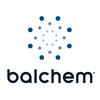
Choline is essential and required for every body

Arshad, U., M. G. Zenobi, C. R. Staples, and J. E. P. Santos. 2020. Meta-analysis of the effects of supplemental rumen-protected choline during the transition period on performance and health of parous dairy cows. J. Dairy Sci. 103:282–300.
Artegoitia, V. M., J. L. Middleton, F. M. Harte, S. R. Campagna, and M. J. De Veth. 2014. Choline and choline metabolite patterns and associations in blood and milk during lactation in dairy cows. PLoS One 9:e103412.
Atkins, K. B., R. A. Erdman, and J. H. Vandersall. 1988. Dietary choline effects on milk and duodenal choline flow in dairy cattle. J. Dairy Sci. 71:109-116.
Blusztajn, J. K. 1998. Choline, a vital amine. Science 281:794-795.
Bobe, G., J. W. Young, and D. C. Beitz. 2004. Invited review: Pathology, etiology, prevention, and treatment of fatty liver in dairy cows. J. Dairy Sci. 87:3105–3124.
Caudill, M.A. et al. 2018. FASEB J. 32, 2172-2180
Cole, L. K., J. E. Vance, and D. E. Vance. 2012. Phosphatidylcholine biosynthesis and lipoprotein metabolism. Biochim. Biophys. Acta. 1821:754-761.
Cooke, R. F., N. Silva Del Rio, D. Z. Caraviello, S. J. Bertics, M. H. Ramos, and R. R. Grummer. 2007. Supplemental choline for prevention and alleviation of fatty liver in dairy cattle. J. Dairy Sci. 90: 2413-2418.
Goselink, R., J. van Baal., A. Widaja, R. Dekker, R. Zom., M. J. de Veth, and A. van Vuuren. 2012. Regulation of hepatic triacylglycerol level in dairy cattle by rumen-protected choline supplementation during the transition period. J. Dairy Sci. 96:1102-1116.
Grummer, R. R. 1993. Etiology of lipid related metabolic disorders in periparturient dairy cattle. J. Dairy Sci. 76:3882-3896.
Imhasly, S., C. Bieli, H. Naegeli, L. Nyström, M. Ruetten, and C. Ger-spach. 2015. Blood plasma lipidome profile of dairy cows during the transition period. BMC Vet. Res. 11:252.
Lima, F.S., M.F. Sa Filho, L. F. Creco, and J. E. P. Santos. 2011. Effects of feeding rumen-protected choline on incidence of diseases and reproduction in dairy cows. Vet. J. 193:140-145.
Reynolds, C. K., P. C. Aikman, B. Lupoli, D. J. Humphries, and D. E. Beaver. 2003. Splanchnic metabolism of dairy cows during the transition from late gestation through early lactation. J. Dairy Sci. 86:1201-1217.
Sahw, G.M., et al. 2009. Epidemiology. 714-719 Sharma, B. K. and R. A. Erdman. 1989. In vitro degradation of choline from selected feedstuffs and choline supplements. J. Dairy Sci. 72:2772–2776.
Zenobi, M. G., T. L. Scheffler, J. E. Zuniga, M. B. Poindexter, S. R. Campagna, H. F. Castro Gonzalez, A. T. Farmer, B. A. Barton, J. E. P. Santos, and C. R. Staples. 2018. Feeding increasing amounts of ruminally protected choline decreased fatty liver in nonlactating, pregnant Holstein cows in negative energy status. J. Dairy Sci. 101:5902–5923.
Zom, R. L. G, J. van Baal, R. M. A. Goselink, J. A. Bakker, M. J. de Veth, and A. M. van Vuuren. 2011. Effect of rumen-protected choline on performance, blood metabolites, and hepatic triacylglycerols of periparturient dairy cattle. J. Dairy Sci. 94:4016-4027.
Arshad, U., M. G. Zenobi, C. R. Staples, and J. E. P. Santos. 2020. Meta-analysis of the effects of supplemental rumen-protected choline during the transition period on performance and health of parous dairy cows. J. Dairy Sci. 103:282–300.
Artegoitia, V. M., J. L. Middleton, F. M. Harte, S. R. Campagna, and M. J. De Veth. 2014. Choline and choline metabolite patterns and associations in blood and milk during lactation in dairy cows. PLoS One 9:e103412.
Atkins, K. B., R. A. Erdman, and J. H. Vandersall. 1988. Dietary choline effects on milk and duodenal
choline flow in dairy cattle. J. Dairy Sci. 71:109-116.
Blusztajn, J. K. 1998. Choline, a vital amine. Science 281:794-795.
Bobe, G., J. W. Young, and D. C. Beitz. 2004. Invited review: Pathology, etiology, prevention, and treatment of fatty liver in dairy cows. J. Dairy Sci. 87:3105–3124.
Caudill, M.A. et al. 2018. FASEB J. 32, 2172-2180
Cole, L. K., J. E. Vance, and D. E. Vance. 2012. Phosphatidylcholine biosynthesis and lipoprotein
metabolism. Biochim. Biophys. Acta. 1821:754-761.
Cooke, R. F., N. Silva Del Rio, D. Z. Caraviello, S. J. Bertics, M. H. Ramos, and R. R. Grummer. 2007.
Supplemental choline for prevention and alleviation of fatty liver in dairy cattle. J. Dairy Sci. 90: 2413-
2418.
Goselink, R., J. van Baal., A. Widaja, R. Dekker, R. Zom., M. J. de Veth, and A. van Vuuren. 2012.
Regulation of hepatic triacylglycerol level in dairy cattle by rumen-protected choline supplementation
during the transition period. J. Dairy Sci. 96:1102-1116.
Grummer, R. R. 1993. Etiology of lipid related metabolic disorders in periparturient dairy cattle. J. Dairy
Sci. 76:3882-3896.
Imhasly, S., C. Bieli, H. Naegeli, L. Nyström, M. Ruetten, and C. Ger-spach. 2015. Blood plasma lipidome
profile of dairy cows during the transition period. BMC Vet. Res. 11:252.
Lima, F.S., M.F. Sa Filho, L. F. Creco, and J. E. P. Santos. 2011. Effects of feeding rumen-protected
choline on incidence of diseases and reproduction in dairy cows. Vet. J. 193:140-145.
Reynolds, C. K., P. C. Aikman, B. Lupoli, D. J. Humphries, and D. E. Beaver. 2003. Splanchnic metabolism of dairy cows during the transition from late gestation through early lactation. J. Dairy Sci. 86:1201-1217.
Sahw, G.M., et al. 2009. Epidemiology. 714-719
Sharma, B. K. and R. A. Erdman. 1989. In vitro degradation of choline from selected feedstuffs and choline supplements. J. Dairy Sci. 72:2772–2776.
Zenobi, M. G., T. L. Scheffler, J. E. Zuniga, M. B. Poindexter, S. R. Campagna, H. F. Castro Gonzalez, A. T. Farmer, B. A. Barton, J. E. P. Santos, and C. R. Staples. 2018. Feeding increasing amounts of ruminally protected choline decreased fatty liver in nonlactating, pregnant Holstein cows in negative energy status. J. Dairy Sci. 101:5902–5923.
Zom, R. L. G, J. van Baal, R. M. A. Goselink, J. A. Bakker, M. J. de Veth, and A. M. van Vuuren. 2011. Effect
of rumen-protected choline on performance, blood metabolites, and hepatic triacylglycerols of
periparturient dairy cattle. J. Dairy Sci. 94:4016-4027.




